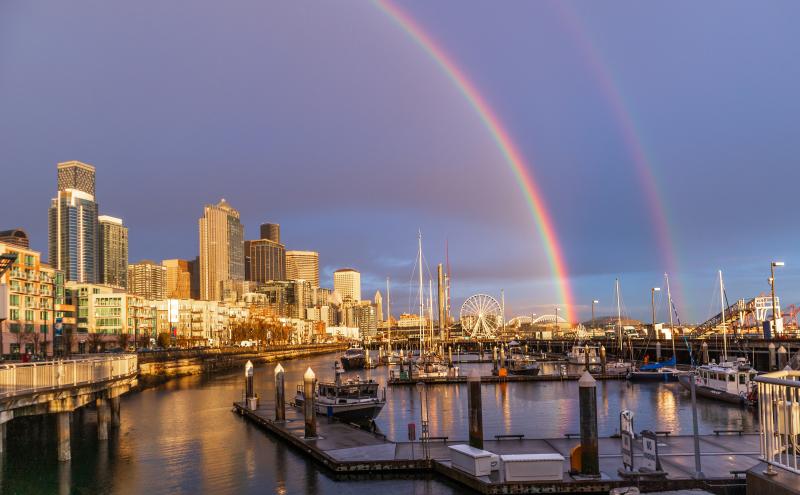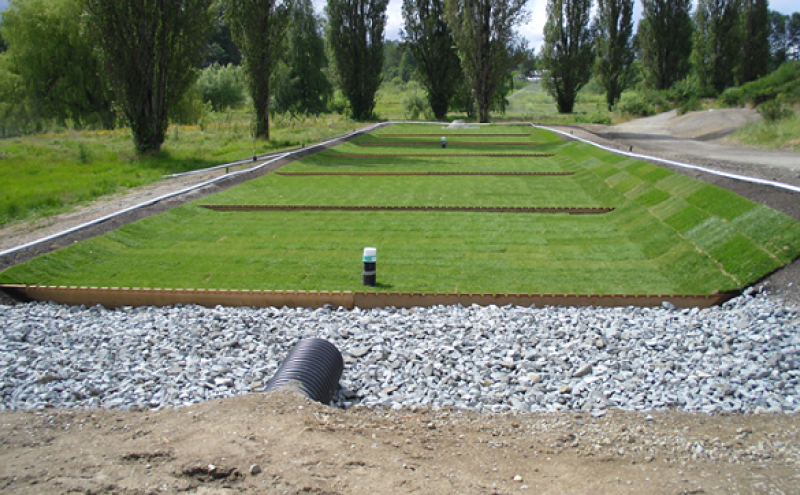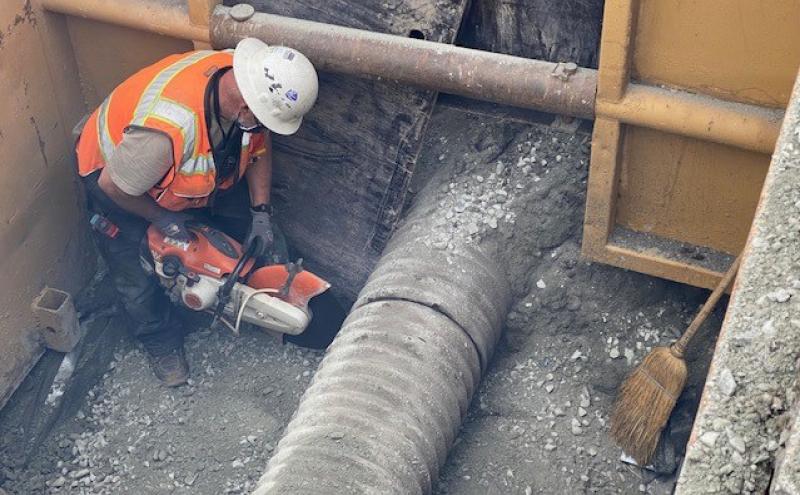
Originally written in 2020; updated in 2023
Rain. You’ve seen it a time or two around these parts. Although it often feels like an unwelcome (and too frequent) companion, consider that water is an essential element of our region — it keeps us alive, helps us thrive, and creates a community we want to live in. So let’s chat about water and how we can save our environment — and keep those salmon (and our orca friends) returning to their beautiful, wet homeland.
One of the most important things we can do to protect our environment and salmon habitats is to manage stormwater runoff into Puget Sound. If you don’t know, stormwater is rain and snow melt that runs off surfaces such as rooftops, paved streets, and parking lots. As water runs off these surfaces, it can pick up pollutants like oil, fertilizers, pesticides, soil, trash, and animal waste. From here, the water flows through storm pipes until it eventually makes it to a local body of water.
Because it often rains on the facilities owned and operated by the Port of Seattle, we have a vested interest in managing the runoff to protect the environment. And here's how.
Right as rain
If you haven’t noticed the silver lining in those clouds, the last five years in our region have witnessed important developments in stormwater management — even if you were not watching. Here’s a quick glance back, a few “firsts,” and a look forward.
Before 2014
For many years, the Port of Seattle paid utility rates to support the City of Seattle’s stormwater infrastructure. As utility rates rose as much as 10% a year, these fees were put towards city-wide stormwater projects, not necessarily towards managing the stormwater runoff at Port properties.
2014
The Port’s marine terminal operators and other maritime businesses operate on more than 1,500 acres around Elliott Bay, the Duwamish River, and other locations. In 2014, the Port of Seattle took a major step towards improving environmental and community health by becoming (and still remaining) the only Port in the country to form and manage its own stormwater utility. And that’s a big deal.
This utility manages a network of 70 miles of pipes and treatment facilities to handle nearly all the stormwater runoff from Port properties. The Port utility operates under a municipal permit issued by the Department of Ecology, and some of the cargo tenants have industrial stormwater permits. The stormwater system now handles all 38 maritime Port and Northwest Seaport Alliance properties with a total of more 1,000 acres of drainage.
2016
Utility rates are evaluated every year and changes are approved by the Port Commission. Rates have increased since 2016, when the Port began collecting fees. Even after this increase, Port of Seattle Utility director Sandra Kilroy says that the Port’s stormwater utility “provides better service at a lower cost.“
This Maritime Stormwater Utility is notable because it:
- Collects utility revenue separately from the Port’s general funds and puts all revenues back into the Port stormwater system to improve the quality of stormwater runoff quality from Port properties
- Expands the areas of stormwater treatment at the Port’s facilities
- Meets or exceeds federal requirements for reducing stormwater pollution
- Delivers competitive rates to the maritime stormwater utility customers who now spend on average 20 percent less than they would without the Port’s Utility
Innovation in precipitation
The Port sets high standards for environmental excellence at all facilities, from cruise terminals and commercial fishing operations, to recreational marinas and maritime shipping centers.
There are several interesting developments in how we’re managing stormwater and protecting the environment. More than a drop in the bucket, in fact.
Keep salmon safe
The Port has been focused on reducing stormwater pollution for a long time. Back in 2008, the Port’s parks were Salmon-Safe certified supported by strict landscape and water conservation practices. We’ve continued the five-year recertification cycle with habitat enhancements and stormwater innovations including the Splash Boxx® system, oyster barrels at Terminal 102, and a rain garden in Centennial Park near Pier 86 to alleviate ponding on the bike path.
Robots in the pipes
To maintain a functioning stormwater system, we utilize a robot to travel through the stormwater pipes and conduct video assessments of the 70-mile infrastructure. The hard-working drone assessed 98% of the system by the end of 2019. Another big deal, because now we know the condition of the pipes and can make any necessary repairs. The Port’s Century Agenda goal is to rehabilitate 75% of the stormwater system by 2035.
Make a splash
In 2014, the Port installed two Splash Boxx® systems, which are bio-retention planter boxes with volcanic soil and plants to filter roof runoff from an older building with a galvanized roof; this type of roof can leach zinc, a pollutant that’s detrimental to fish. In 2019, the Port moved the two boxes to a maintenance yard parking lot and a roof at Maritime Industrial Center to compare how the bio-retention alternatives treated stormwater runoff in different situations, specifically the removal of zinc, copper, and turbidity.
Oyster catchers
Another Port innovation is the use of crushed oysters for removing pollution. The Port has implemented a low-tech (but effective) solution to filter heavy metals from the water. Oyster shells are a natural filter that prevent harmful heavy metals like zinc and copper from reaching the maritime environment. Rain barrels containing oyster shells can be connected to roof downspouts to filter water before entering the stormwater system. We currently are piloting this at Terminal 102.This natural solution reduces pollutants in Puget Sound and promotes a healthy habitat for salmon and orcas. In 2022, the Port updated the media washing machine used to clean oyster shells from gas-powered to fully electric, making it safer, more reliable, and reducing the carbon footprint.
Improving Catch Basins
The Port has been using filtration systems in our catch basins for years; these simple systems trap sediments and debris, preventing them from discharging into Elliott Bay. In 2023 we began testing some new methods, including the Retain Drains, which filters dirt, leaves, trash, and other debris, and Hula Bugs, which is a hydrocarbon absorbent that collects different kinds of oils. Currently, they are located at our marine maintenance parking lot. These systems, along with the maintenance team’s effort to sweep areas, help keep our surface water clean.
When it rains around the Port, new ideas start flowing. And now you know that managing rain and stormwater can go a long way towards creating a happy and safe place for all Northwest residents, including our famous finned friends.









